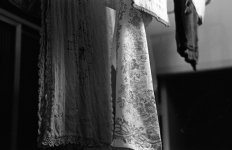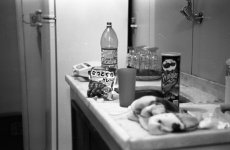mascarenhas
Established
On my first try at bulk loading tri-x I accidentaly loaded the film "upside down" (with the base side facing down, and the emulsion side up). The fool here wasn't sure which was which, and was in too much of a haste to try his new toy to look on a roll of tri-x he has in the fridge. Loaded about 12 shots, put the film in the camera and snapped pictures around the house.
Loaded the film in the tank, set up dev and fix, but for some reason I decided to check the roll of tri-x on the fridge, and end up discovering I exposed the wrong side of the film. Dismayed, I decided to develop the film anyway, as I had already diluted the developer and didn't want to just throw it away. I didn't expect anything good would come out of it, but to my surprise, the negatives seem fine! They are drying right now, and scanning them will be the final proof of the pudding, but visually they look ok (apart from the fact that when you see the picture right-side up the frame numbers are upside down and reversed). Doesn't seem to have affected the sensitivity of the film, too, as the density is ok. That was quite a surprise! Did anyone here have a similar experience? Maybe just for the fun of it? 🙂
Loaded the film in the tank, set up dev and fix, but for some reason I decided to check the roll of tri-x on the fridge, and end up discovering I exposed the wrong side of the film. Dismayed, I decided to develop the film anyway, as I had already diluted the developer and didn't want to just throw it away. I didn't expect anything good would come out of it, but to my surprise, the negatives seem fine! They are drying right now, and scanning them will be the final proof of the pudding, but visually they look ok (apart from the fact that when you see the picture right-side up the frame numbers are upside down and reversed). Doesn't seem to have affected the sensitivity of the film, too, as the density is ok. That was quite a surprise! Did anyone here have a similar experience? Maybe just for the fun of it? 🙂



